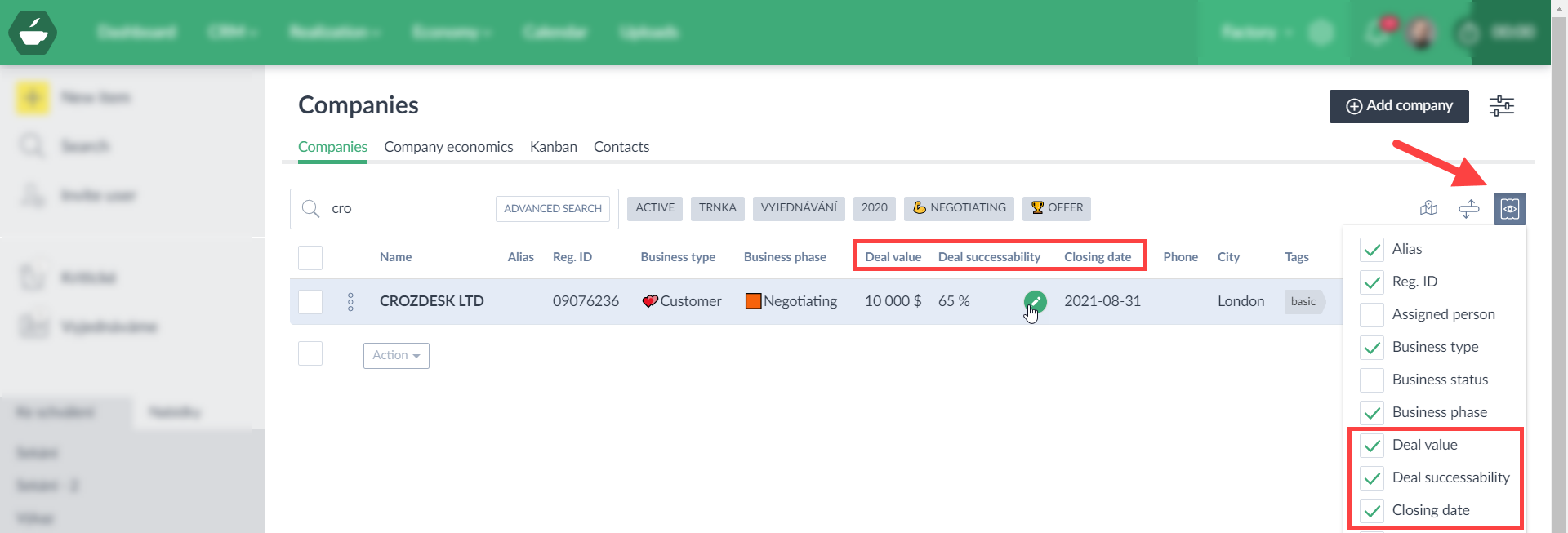Some consider the idea of a 360 customer view to be unattainable, and we understand why. Having a complete, holistic understanding of your customers and their sentiments and maturity stage, seems aspirational.
But thanks to the advent of customer relationship management (CRM) software, we’ve come quite close to 360 customer views – even if we haven’t secured a full view. CRMs give businesses direct access to prospect data in real-time, provide account-level insights, and empower teams to prioritize activities based on real data.
In this article, we’ll explore the fundamentals of establishing a 360 customer view.
🎓 Caflou academy is brought to you by Caflou - 100% digital business management software
How do CRMs help facilitate a 360 customer view?
Before CRMs came to fruition, businesses relied on spreadsheets and static data to manage information about accounts, customers, and deals. Now, CRMs aggregate and centralize data from various channels, providing businesses with a holistic, 360 customer view.
With a CRM, teams can access granular insights to evaluate the value of accounts or deals. For example, users can track:
- Average deal sizes
- Win and loss rates
- The most profitable accounts and projects
- The average lifetime of an opportunity before conversion
And much more. However, while the CRM provides valuable insights into a substantial part of the customer journey – including the sales pipeline – it doesn’t establish a 360-degree view alone.
A good example of this discrepancy is to consider customer experience management (CXM), feedback collection, and customer support. Feedback and customer support interactions can reveal valuable insights about accounts – such as their likeliness to be brand advocates or churn risks. This data might not be collected via the CRM, but it’s invaluable for establishing a 360 customer view.
Thus, in addition to CRM and the data it aggregates, businesses must consider data from all channels and touchpoints.
CRM insights before, and during, the sales process
CRM insights help teams manage their sales pipeline and grow their business. Here are five ways CRM insights are invaluable before, and during, the sales process.
1. Lead and prospect data
In B2B, sales cycles are typically longer, spanning anywhere from a few weeks to even a year. That means, at any given moment, your business will have multiple leads and prospects of interest. A CRM lets companies create and manage a database of their leads and prospects, with profiles and contact information, and monitor their progress along the sales cycle.
Moreover, CRMs have another vital role to play here – in data enrichment. Since B2B sales cycles are longer, it’s essential to make sure your data is up-to-date. Leads might change their contact information or even job titles, but fortunately, data enrichment tools update CRM data routinely.
2. Engagement overview
How do you quantity-lead nurturing efforts? How do you know which prospects are most ready to convert?
While there are several factors to consider here, engagement is a big one. It’s important to track which accounts are interacting with your business the most, and how they’re engaging. A website visit may not be as important as, say, downloading a white paper or requesting a free demo.
With a CRM, businesses can track engagement with their accounts – both before and after conversions.
3. Segmentation
In B2C, businesses focus on customer segmentation. In B2B, account segmentation is equally, if not more, important. That’s because, in B2B, deal sizes vary dramatically – some accounts could be worth tens of thousands, while others are worth hundreds of thousands, or even millions.
Thus, CRMs are invaluable for segmenting accounts to help businesses prioritize high-value ones. Moreover, the solution helps teams engage with decision-makers at every level – from the frontline to senior executives – to keep the entire account engaged.
4. Opportunities
Is an account you’ve been nurturing for months ready to convert? Is a company you’ve been wooing finally showing signs of interest? With all your customer interactions stored in one place, a CRM reveals opportunities for SDRs to swoop in and close deals as opportunities present themselves.
Don’t risk warm leads cooling down, or possible deals being lost due to inaction. Make sure team members are ready to act – and that they have access to the right data.
5. Understanding lead maturity and lead scoring
Lead scoring is used to quantify a lead’s “maturity” – i.e., their perceived likelihood to convert. As you’d expect, lead scoring isn’t perfect, and businesses will need to refine their scoring framework using a continuous feedback loop.
That is, after adopting an initial lead scoring methodology, companies practically assess the accuracy of the scoring model – i.e., how often, and to what extent, the scoring helps SDRs identify opportunities. Teams then use previous information to continuously refine the methodology.
Trivially, a lead scoring methodology is based on two concepts:
- Specific behavioural queues signify a progression in lead maturity.
- Some queues indicate greater maturity than others – for example, a demo request implies more maturity than a website visit.
Many CRMs support lead scoring within the software, and solutions like Caflou go the extra mile to help businesses evaluate opportunities at the deal level. For example, Caflou helps teams identify the “success probability” of a deal closing at the account’s current maturity phase, and the “expected deal value”.

CRM insights beyond the sales process
As we discussed earlier, the customer’s journey does not end at the sale. The post-purchase experience is a crucial part of their journey, especially in B2B, where businesses form long-term relationships in many industries. This means a key part of revenue lies in repeat business and, by extension, post-purchase marketing and support.
1. Account-level insights
Since B2B deal sizes vary drastically from account to account, it’s important to track account-level insights both before and after purchase. After the sale, CRMs let businesses track continued engagement with accounts, support requests, and more.
But dedicated surveying or customer experience software helps you go the extra mile and collect customer feedback at every level – i.e. the frontline, management, and executive levels. These insights can be combined with CRM data to help businesses identify churn risks.
2. Project-level insights
Some projects may be more profitable than others, and some might not be profitable at all. When analyzing your finances and cash flow, it’s important to identify which projects are paying the bills, and which are costing you.
Business management solutions like Caflou, which include CRM capabilities and more, reveal project-level insights. This lets teams monitor the progress of projects, see profitability in real time, and plan timelines.

3. Contracts and documentation
Keeping track of contracts – and correspondences pertaining to them – becomes tedious, especially as the number of accounts you deal with increases. A CRM helps businesses centralize all correspondence and agreements. Moreover, business management solutions like Caflou allow projects and deals to “live” on the platform – i.e. progress, bottlenecks, and timelines are tracked.
4. Reporting
Reporting is a crucial driver of progress; to improve growth, businesses need to understand how successful their existing initiatives are, where failures occurred, and what to expect in future. Predictions, forecasting, and reporting rely on accurate and comprehensive data, and a CRM helps achieve both traits.
Moreover, CRMs also help automate reporting to keep clients in the loop. This helps increase transparency and cultivate client relationships, while minimising the burden on team members.
5. Closed-loop feedback
Closed-loop feedback is not a new concept, but it’s certainly a relevant one. Closing the loop means going beyond collecting feedback from customers and actually taking corrective action, and informing customers of the action you’ve taken.
According to the most comprehensive B2B experience benchmarks report, companies that close the loop at every level (from frontline to executive) increase customer retention by approximately 2.3%. On the other hand, failing to close the loop in a timely manner increases churn.
A CRM helps businesses improve their closed-loop feedback process by keeping track of support requests and monitoring relationships with high-value accounts. Moreover, the CRM stores the contact information of each decision-maker in an account, so team members can effectively close the loop at each level.
6. Referral marketing, upsells, and cross-sells
A study by Optimove analyzed various businesses at different growth stages to better understand their revenue streams. The research revealed that businesses with a combination of repeat business and new customers experienced more growth than companies relying heavily on only one stream.
And while the ideal new business: repeat business ratio will vary from company to company, the importance of repeat business can’t be ignored. So, just as businesses need a clear strategy to acquire new customers, it’s equally important to invest in initiatives to drive repeat business.
CRM insights are valuable for driving repeat business because they store a breadth of historical data with previous customers. This includes details of project profitability, account values, previous interactions, and more. Businesses can leverage CRM insights to identify previous customers to remarket to; moreover, historical data also helps deliver more refined and relevant pitches.
Moreover, CRMs also help businesses increase revenue through referral marketing; an interesting intersection between repeat business and new customer acquisition. By evaluating an account’s sentiments toward your business, you can identify customers most likely to promote your brand through referrals and engage them.
Choose Caflou for a 360 view of your customers and business
A CRM helps manage your sales cycle, before and after purchase, and cultivate meaningful relationships with your accounts. Caflou is a complete business management solution that includes CRM functionality, and much more.
Caflou includes project management functionality, built-in workflow automation, client invoicing, and business economics management. With Caflou, businesses can better manage their cash flow, identify the profitability of projects (which helps discern the value of specific accounts), and automate repetitive tasks to save valuable time.
Get started with Caflou to get a 360 view of your customers and business.
<< Back to all articles in Caflou Business Management Academy